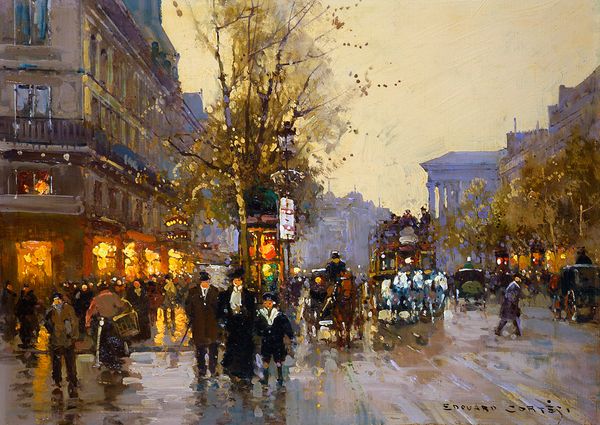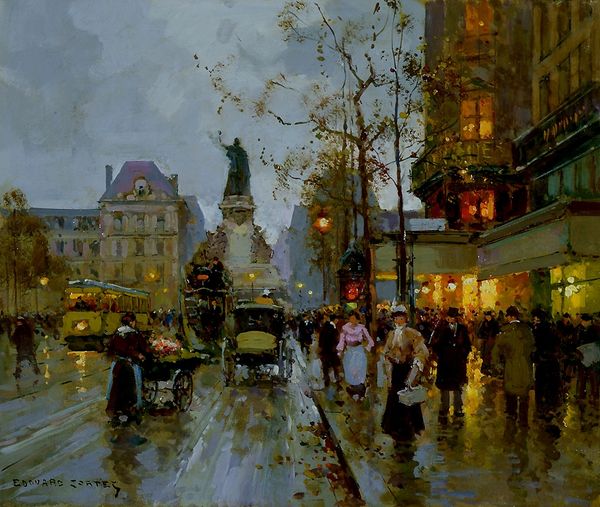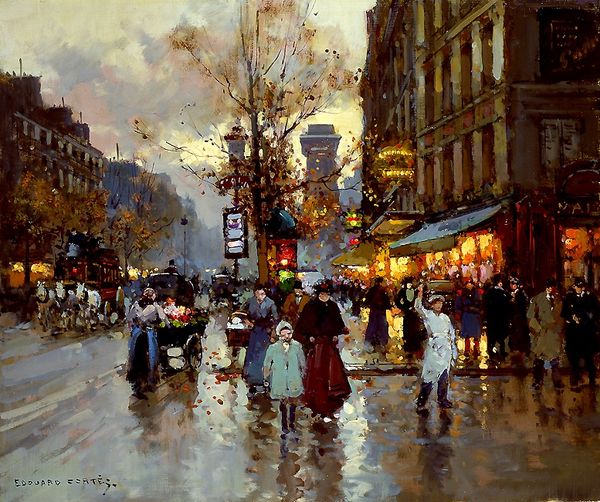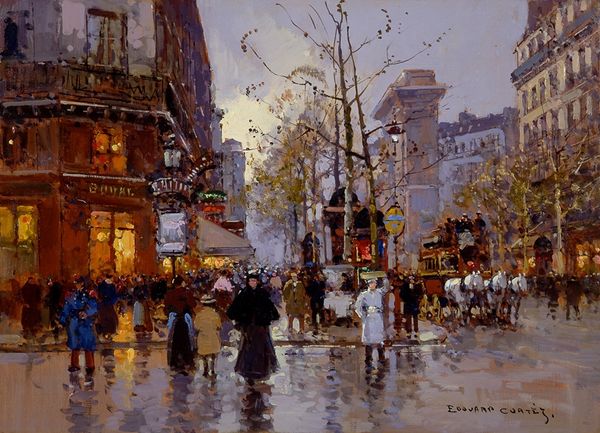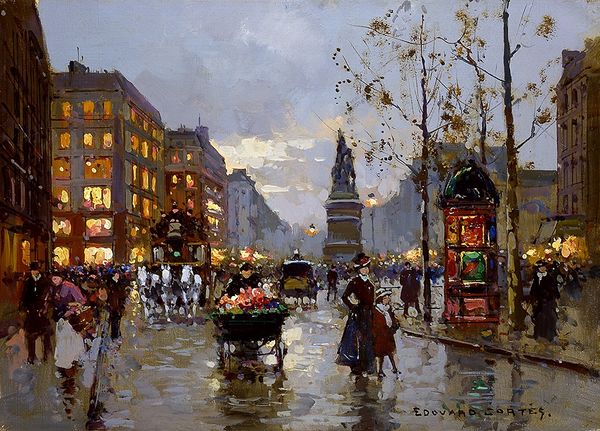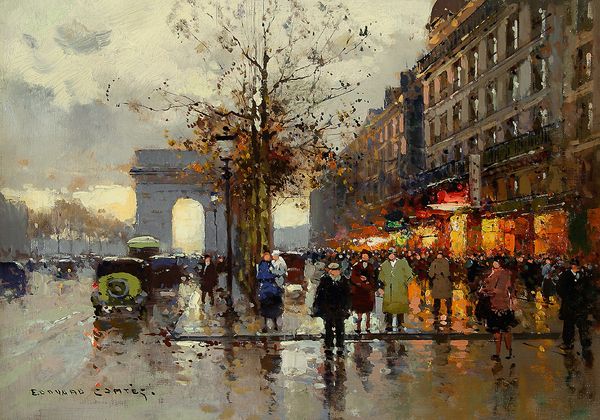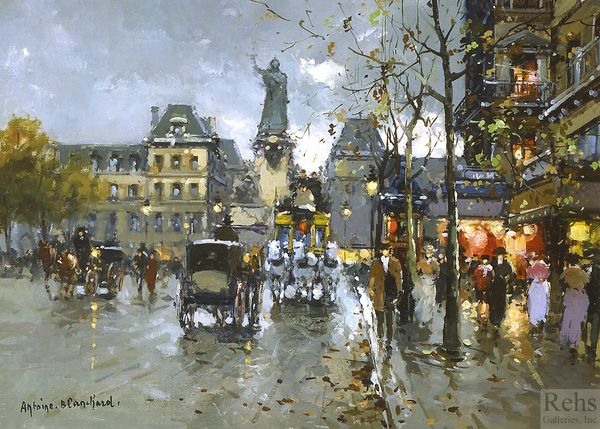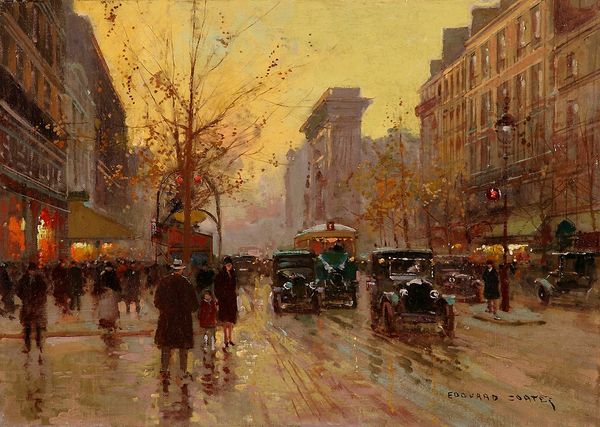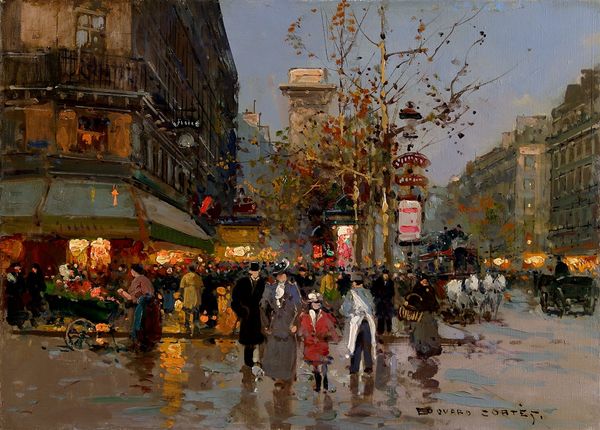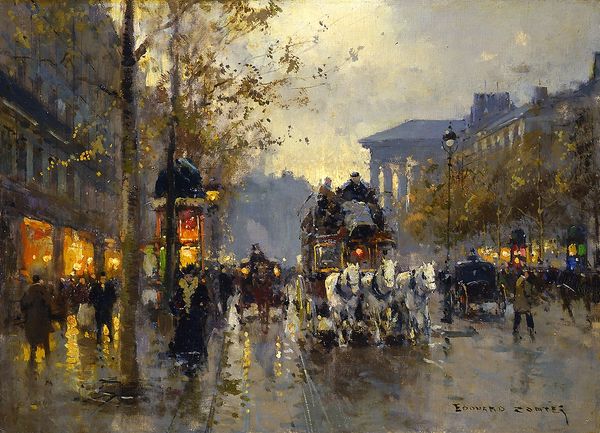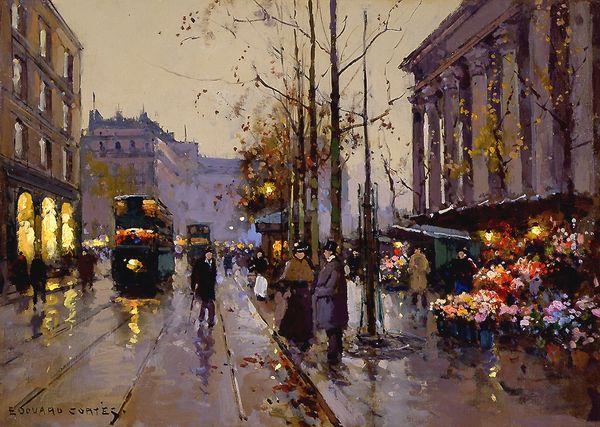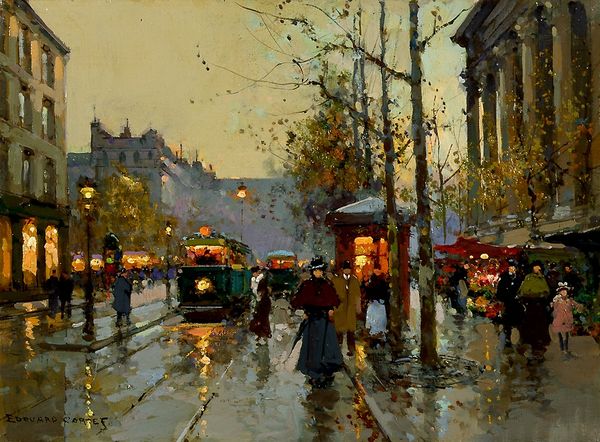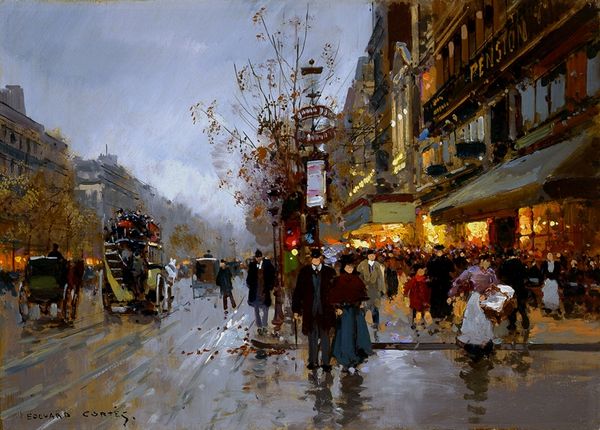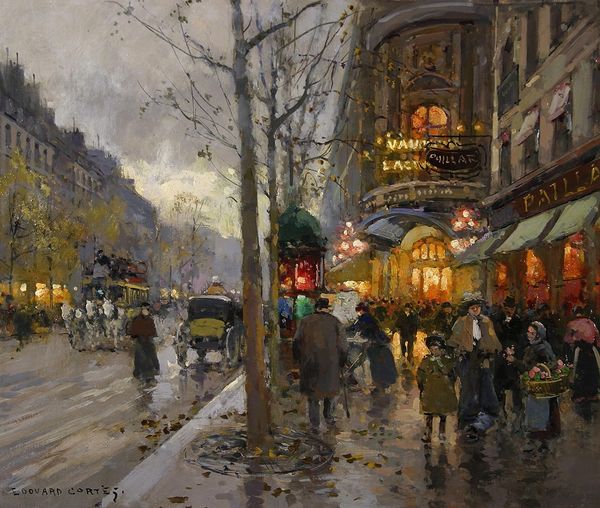
painting, plein-air, oil-paint
#
painting
#
impressionism
#
impressionist painting style
#
plein-air
#
oil-paint
#
vehicle
#
landscape
#
figuration
#
oil painting
#
romanticism
#
cityscape
Copyright: Antoine Blanchard,Fair Use
Curator: We’re now looking at Antoine Blanchard’s painting, "Place de la Republique." Blanchard, known for his cityscapes, particularly of Paris, really captures a moment here with his oil paint. Editor: The mood is undeniably melancholic. There's a soft grey tonality overall, but then you get these surprising flashes of warm, golden light spilling out from the shops, reflecting in the wet streets. It's a visually interesting contrast. Curator: Absolutely. The contrast also highlights the material reality of Parisian street life at that time. Consider the carriages; each one assembled piece by piece in workshops, representing labor and skill. The people are shown doing commerce and leisurely stroll, key actions related to labor division and class. Editor: From a formal point of view, observe how Blanchard uses loose brushstrokes to create the illusion of movement, of bustling city activity. And the verticality of the buildings, balanced by the horizontal lines of the street, gives a nice sense of depth to the composition. Curator: And don't forget that choice of plein-air as medium: taking the studio out onto the street allowed a truer depiction of light, atmosphere and of the actual circumstances surrounding these individuals' routines. Editor: Yes, and the atmospheric perspective definitely pulls your eye toward the monument in the distance, a symbol perhaps of permanence amidst all this fleeting activity, however it has its form blurred so it blends well. Curator: What fascinates me is thinking about how Blanchard positioned himself within a specific economy; both the economy of painting and the specific Parisian economy he's depicting. Think about his patrons, the collectors and what their aspirations were. Editor: Indeed. Seeing this painting I start thinking of semiotics, how buildings, even streets and squares are loaded with signifiers about a city's ambitions and also the aspirations of their patrons, even a nation. Curator: Ultimately, what’s being bought and sold extends beyond a material object, into social aspirations, Parisian culture, perhaps even dreams. Editor: It really does go both ways, doesn't it? We've seen a city scene, captured with loose strokes of color. But understanding some of that original setting allows us to now interpret these structures of signs.
Comments
No comments
Be the first to comment and join the conversation on the ultimate creative platform.
